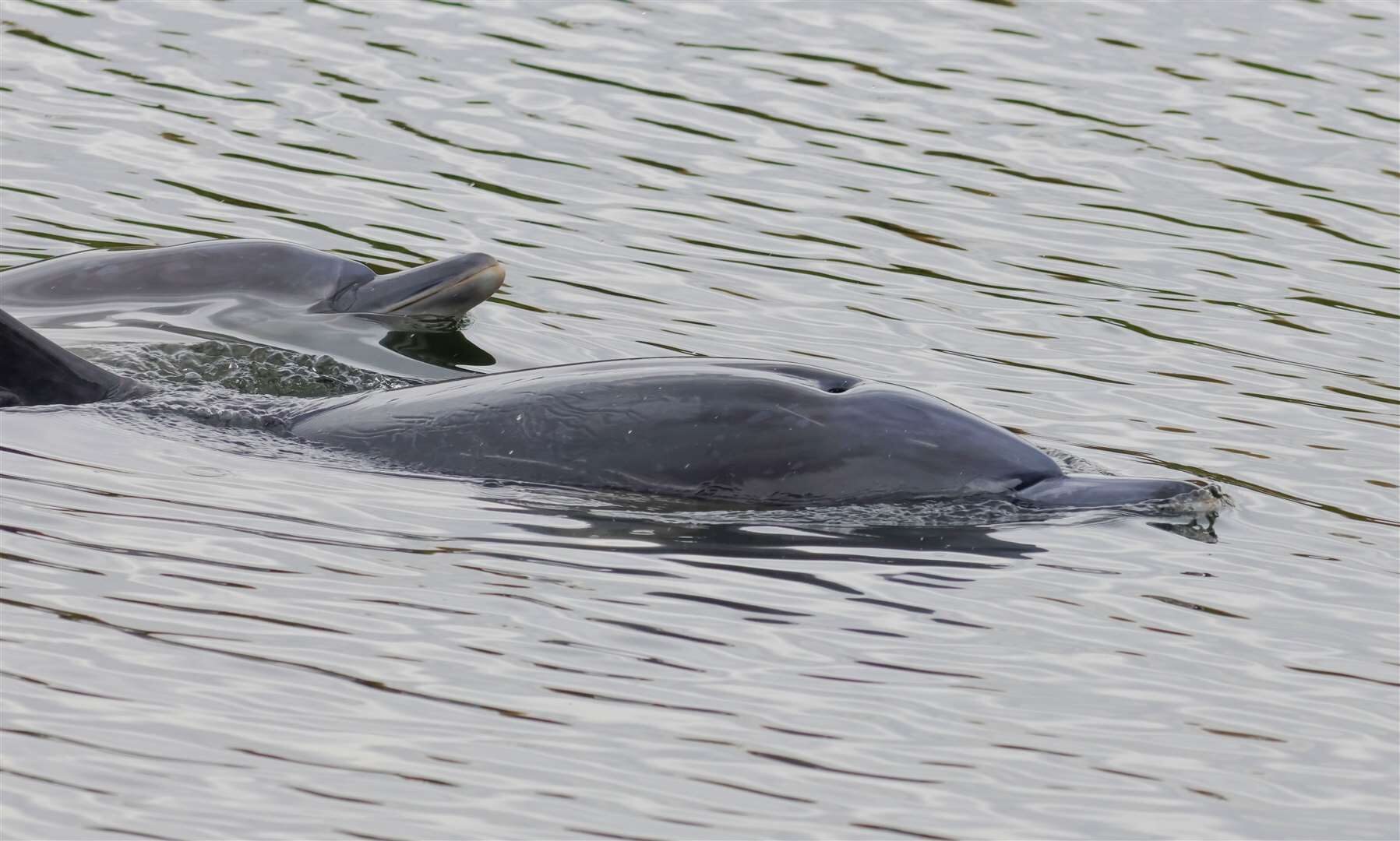
© Jon HeathCommon dolphins swimming in the River Great Ouse, near Bluntisham in Cambridgeshire.
Dolphins have been spotted about 40 miles inland in the River Great Ouse in Cambridgeshire. It is the furthest they could travel upstream on the river,
and may be the furthest inland that the species has ever been seen in the UK.It is believed the two dolphins are a mother and calf, and their sighting on the Ouse, around Bluntisham and Earith, has prompted concerns for their wellbeing.
Jon Heath, the county bird recorder for Cambridgeshire, who took these pictures and regularly contribute to the Cambridge Independent's nature coverage, went to see them after they were spotted by photographer Simon Stirrup on Thursday.
Jon told us: "It is far as they possibly could have travelled upstream along the river. As far as I know they have never been seen in this part of the river before, and it may be the furthest inland this species has been seen in the UK before.
"In 2020, one was seen in the River Nene near the Nene Washes, though it sadly died.
"It is unlikely this pair will survive and a rescue is likely to stress them out too much - it's a long way back to the sea.
"Apparently, they are less buoyant in freshwater than in saltwater so will need to use up more energy swimming."
He said they were "almost certainly the same pair seen in the Ouse at King's Lynn on Tuesday".
Common dolphins are a rare sight on the East coast and much more regularly seen on the West coast.There are also concerns that the mother and calf may not find enough suitable food in the fresh waters of the Ouse.
"Generally true marine mammals in freshwater environments do not have happy endings, but we will have to wait and see," said Jon.
The British Divers Marine Life Rescue organisation, which helps rescue marine animals when they become stranded, is understood to be monitoring the situation, although a rescue may prove difficult or too stressful for the dolphins.
The charity was formed in 1988 when a group of divers got together in response to a mass mortality of common seals in the Wash area of East Anglia.
Its medics often work to rescue stranded seals, but are also increasingly involved in the response to stranded and entangled cetaceans - whales, dolphins and porpoise. Their latest rescue came on August 31 when they successfully helped a mother common dolphin and her calf that had become stranded in Strangford Lough, Northern Ireland's largest sea lough.
The group has been contacted for further information.
Meanwhile, passers-by have been amazed by the sightings.
And Nicola Crockford, principal policy officer at the RSPB, even snorkelled with them at Brownshill Lock near Bluntisham.
She described it as "amazing being in the water with them, hearing and feeling their squeaks as they approached me" and wondered if they followed eels inland.
She said it was "surreal to see common dolphin mother and calf arch past" cattle on the river bank "keeping in close unison, surfacing and blowing in synchrony".
Ms Crockford, who regularly snorkels in East Anglian rivers and raises awareness of their health, was alarmed by the site of invasive species in the Great Ouse. She described seeing Chinese Mitten Crabs - "some as big as dinner plates" - and shells of zebra mussels and Asian clams.
Comment: 3 days later: Thirteen dolphins die after beaching on Skye, Scotland